|
|
|
|
The Intake Your Source for Collaborative News April 2023 |
|
|
|
|
|
|
|
|
|
Welcome Alyssa, New Coordinator for the Safe Water Conservation Collaborative By: Alyssa Murray |
|
Growing up, my family taught me the importance of spending as much of my time as possible outdoors and really instilled an appreciation of my backyard and West Virginia specifically. They showed me how lucky I was to grow up in a place as beautiful as this state, and showed me all the ways nature provides for us, from picking mushrooms and ramps in the forests, fishing in the rivers, and rock climbing in the mountains. I spent most of my childhood in Shepherdstown and Harpers Ferry, WV, and took full advantage of all the outdoor adventures the area has to offer. This included spending time as a raft guide on the Potomac and Shenandoah Rivers, guiding visitors along zip lines throughout the mountains, hiking every trail I could find, and kayaking or tubing down the rivers on many summer days. I focused my love of the outdoors into my education, earning my Bachelor’s degree in Environmental Studies from Shepherd University. While there, I became Vice President of Shepherd’s Environmental Organization, which helped me gain experience organizing groups and creating partnerships for others to come together with the common goal of protecting and restoring our environment. I’ve also interned with the Land Management team of the National Fish and Wildlife Service at the National Conservation Training Center, which helped me learn more about land conservation. I am very passionate about environmental conservation, especially throughout the Eastern Panhandle. I am thrilled to join the Potomac Conservancy team and begin working with the Safe Water Conservation Collaborative to work toward the goal of a clean Potomac River! |
|
|
|
|
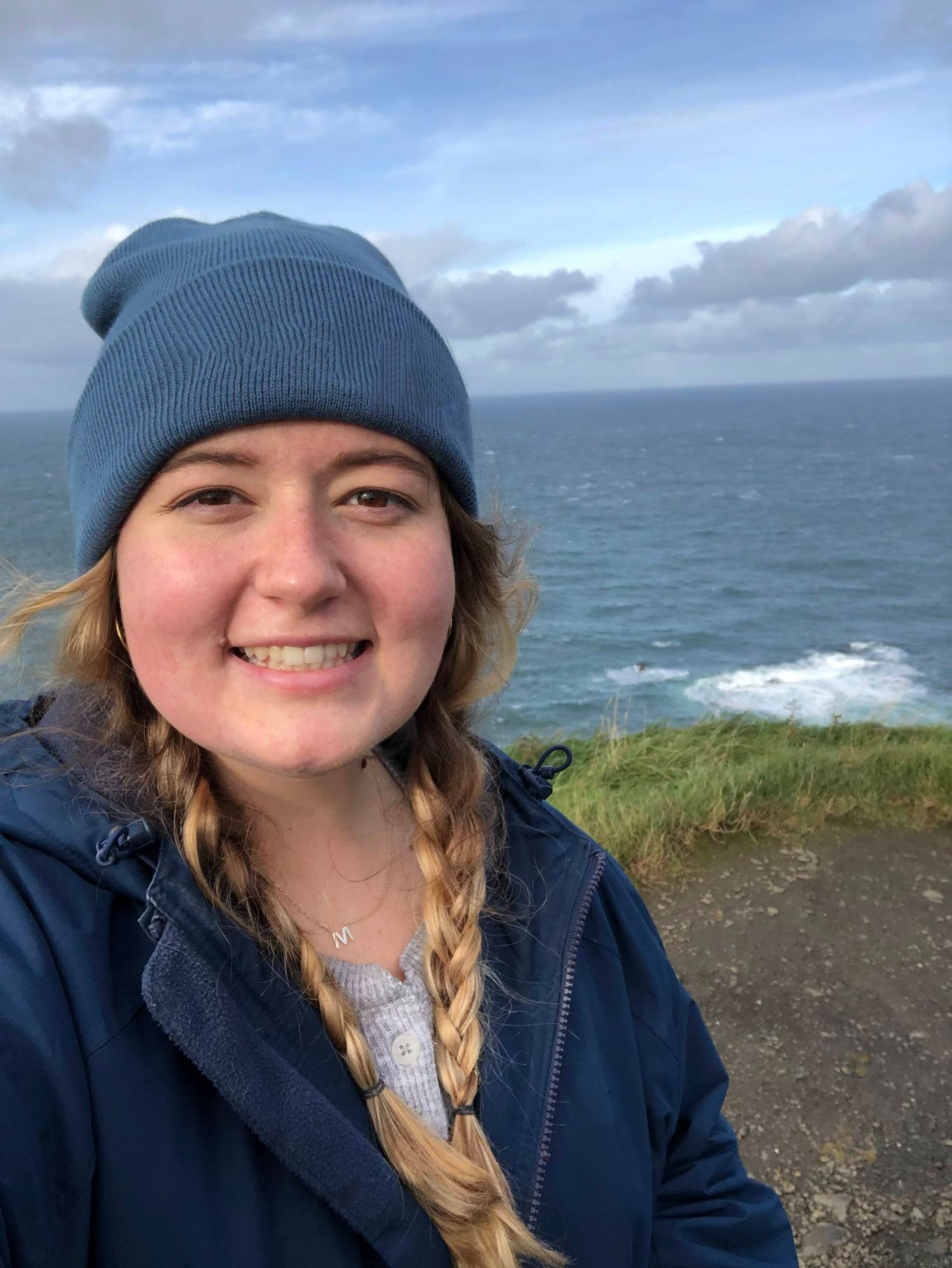 |
Alyssa Murray, the new Eastern Panhandle Conservation Manager and coordinator for the Safe Water Conservation Collaborative |
|
|
|
|
|
|
|
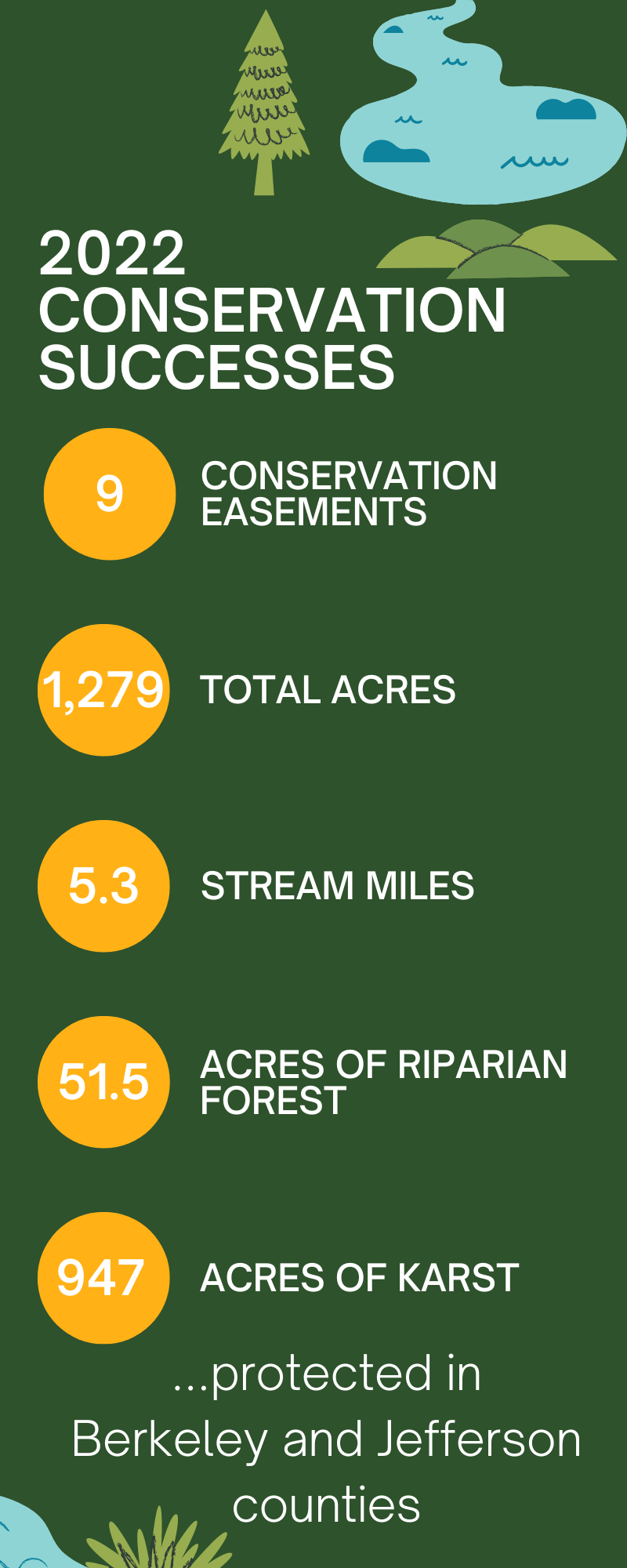 |
|
|
Jefferson County Farmland Protection Program Grows to 6,540 Acres |
|
|
|
On April 7, 2023 the Jefferson County Farmland Protection Board welcomed its second protected farm of the year, and the 56th farm in the program. The addition of the 178-acre Kime Farm brings the county’s total to 6,540 acres on 56 farms. The owners of the Kime Farm property voluntarily established the conservation easement on their farm that maintains working lands, natural habitat and rural open space in perpetuity. The owners received $612,790 from the Farmland Protection Board for permanently retiring their development rights and donated over $375,000 of the conservation value of their land. Owner Jake Farver remarked “It was a sincere pleasure working with the Board and more particularly Ms. Wheeler, the program director. Our goal from the outset of our purchase of the property was to conserve the land in perpetuity for the benefit of future generations as well as the open space and agricultural nature of this beautiful property. It is an honor to be a small part of a great conservation program and have the opportunity to use it as an example to our children and grandchildren about how we must take individual and collective action to protect our most important resources.” |
|
|
|
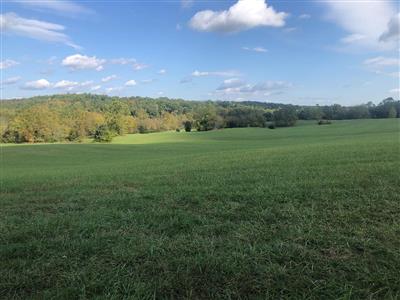 |
|
|
Located on Brucetown Road in Kearneysville, the protected farm buffers 2,200 feet of Opequon Creek. The majority of the property is open rolling hayland, and contains a large forested section. The farm borders other active farmland and a 154-acre tract known as “Fiddler’s Bottom” that lies across Opequon Creek and is protected through the Berkeley County Farmland Protection Program. Currently, the Board is working with the Natural Resources Conservation Service (NRCS) to complete conservation easements on two additional farms totaling 270 acres. Another four farms totaling 500 acres are in application for matching funds from federal partners (NRCS and the American Battlefield Protection Program). For more information about the Jefferson County Farmland Protection Board, contact the Board at: 304/724-1414 or jefferson@wvfp.org. |
|
|
|
|
|
|
|
Shout Out! A Huge Thank You to Landowners who Participated in SWCC Postcard Campaign |
|
|
|
Thank you to the landowners who participated in the landowner legacy postcard campaign! In an effort to generate more interest in conservation easements among landowners in Berkeley and Jefferson counties, the Education & Outreach workgroup conducted a landowner legacy postcard campaign. Four separate mailings of 500 postcards, such as the one pictured on the right, were sent to landowners in Berkeley and Jefferson counties. A huge "THANK YOU!" to the landowners who agreed to participate in this postcard campaign:
- Matthew Grove & Lisa Dall'Olio
- Clint & Christia Hogbin
- Mark Eddy
- Bo Hammond
|
|
|
|
Landowners are essential to the work of the Safe Water Conservation Collaborative, and we are honored to highlight their stories and conservation easement successes! |
|
|
|
|
|
|
|
What to Look For: Spring Ephemeral Wildflowers Awaken By Laurel Schwartz |
|
The Spring season is bringing rejuvenation to the world around us, and it is so important to stop and observe the natural beauty of this area. As we listen to the songs of birds, witness the first butterflies of the season, and watch buds become leaves and flowers, we are reminded of the fleeting nature of many things. |
|
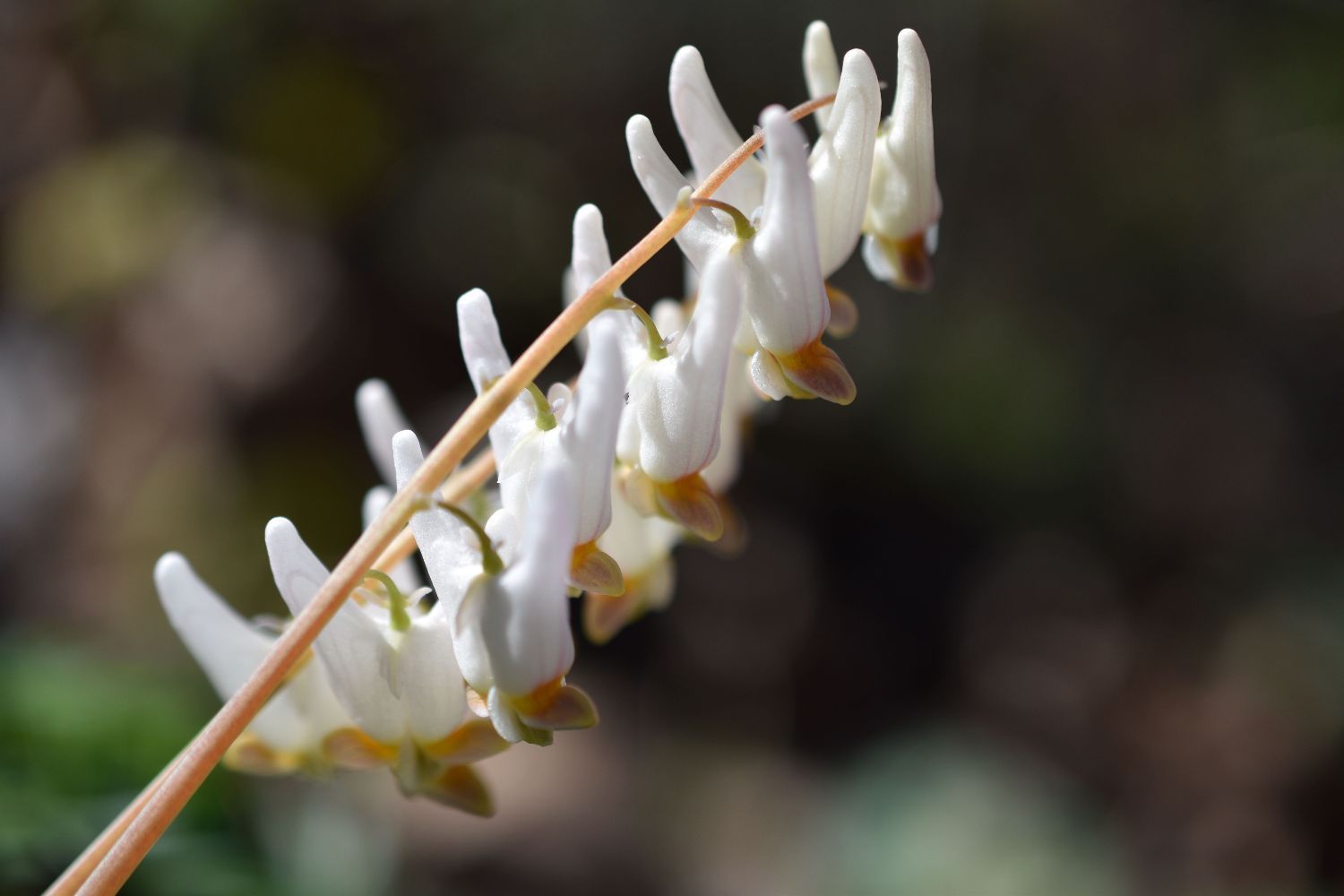 |
|
|
Spring ephemeral wildflowers really capture the essence of this fleeting season, and display for us a rapid succession of the cycle of life. It’s in the name, “ephemeral!” Spring ephemeral wildflowers take advantage of the brief period of time where there is more sunlight available in early spring, but before deciduous trees start growing leaves and blocking the light from the understory. They germinate, sprout, bloom, seed, and then die back, all within the span of a few weeks. While some spring ephemerals may last longer than others, this spectacle is easy to miss out on if you are not religiously making trips out to find them. In fact, each time that you go wildflower watching, you will see a different display, as the peak time to see each species is different. |
|
|
|
Most spring ephemerals rely on ants to disperse their seeds. The seeds have a structure called an elaiosome, rich in lipids and proteins, which serves to attract ants. Ants take the seeds back to their nests and eat the elaiosome as food. Then they bring the seed to the surface to get rid of it. Then, the seed is able to germinate in a new area. This is a unique partnership between ants and plants, and is known as “myrmecochory.” |
|
|
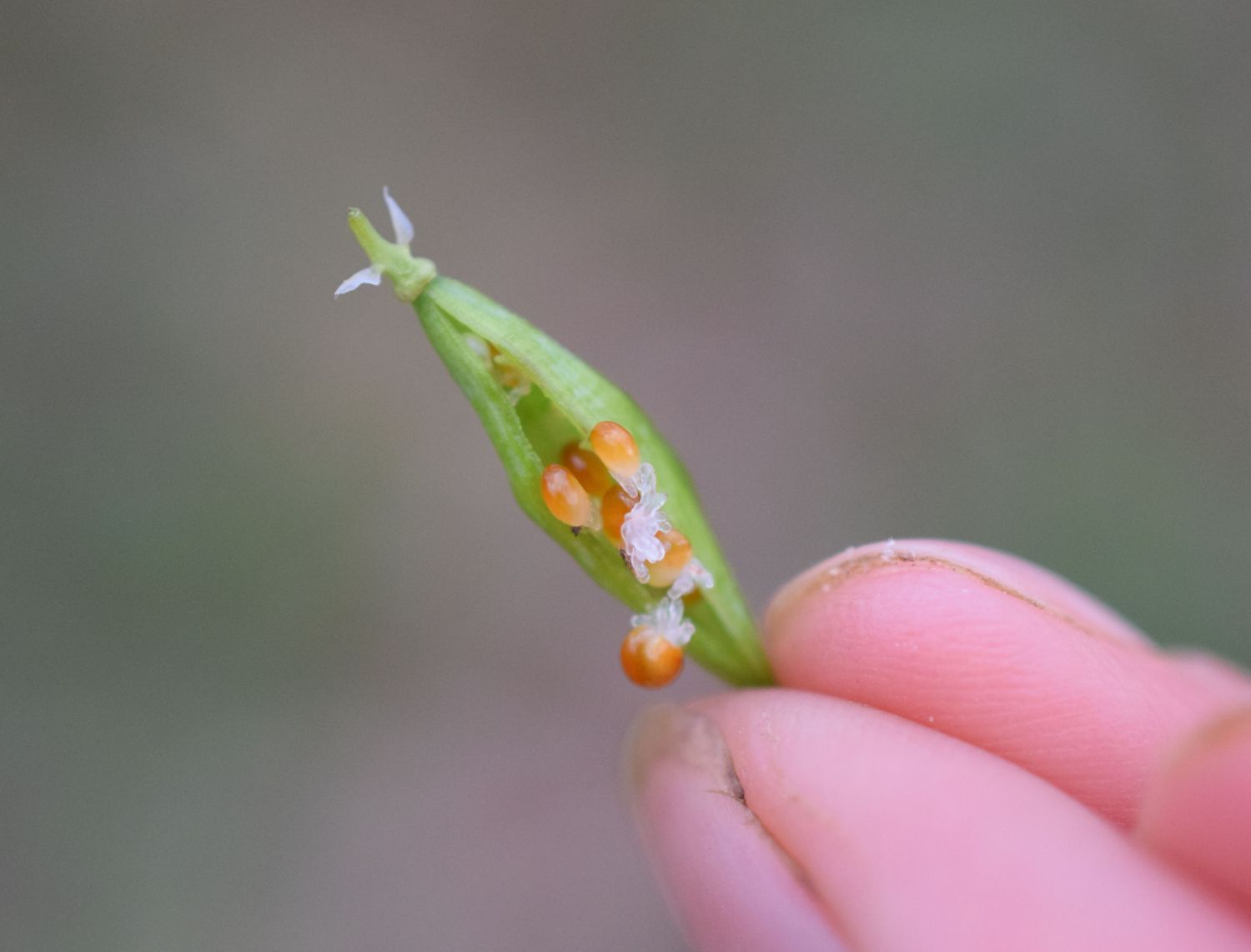 |
A close-up view of seeds and elaisomes |
|
|
|
|
|
Some of my favorite spring ephemeral wildflowers are Shooting Stars, Dutchman’s Breeches, Trout Lily, Twinleaf, Bluebells, Toadshade, and Bloodroot. As I go out to observe them, I bring my camera along to both take some beautiful shots and capture the date of the first appearance, so that I can track species’ phenology and compare to previous and future years. Depending on the area’s climate, the blooming window can change. Get out and go see the rare spectacle while it lasts! |
|
|
|
|
|
West Virginia Rivers Coalition
3501 MacCorkle Ave SE #129 | Charleston, West Virginia 25304
304-637-7201 | wvrivers@wvrivers.org |
|
 |
|
|
|
|
|
|
|
|